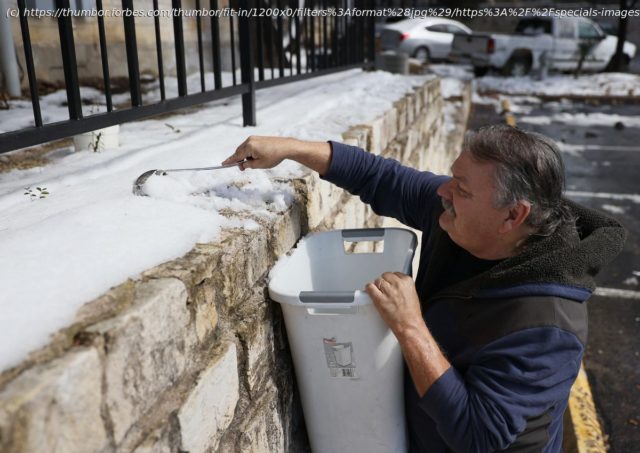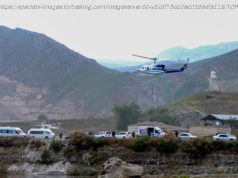Though we were spared from the last natural disaster that rolled through Dallas, an EF5 tornado, we were NOT spared from the arctic cold that swept our state beginning Sunday night when the mercury dipped to 7 degrees. BRRR!
I live in Dallas, and though we were spared from the last natural disaster that rolled through here, an EF3 tornado right down the street, we were NOT spared from the arctic cold winter storm that swept our state beginning Sunday night when the mercury dipped to 7 degrees. My biggest concern was the states’ power grid for electricity. I figured we might lose power in some areas, and I worried most about multi-family apartments. I never dreamed, though, how many would be impacted, how it would cross socio-economic barriers, and that we would run low on natural gas since we are the nation’s number one supplier. When our power went out, we had no heat in the house. No hot water, either. The longest blackout,16 hours, blew out a tankless hot water heater and froze the pipes behind my washing machine, located on a north wall. When I ran the washer a few days later, water spewed everywhere. The first blackout occurred at midnight Sunday, ironically, when I was in the bathtub. Oncor’s Definition of “Rolling Blackouts” We checked with Oncor, Texas’s largest transmission and distribution electric utility, on our phone apps. Expect rolling blackouts, it said, for 15 minutes to an hour at a time, which we were familiar with from visiting our son in California. But that first blackout lasted until 10 am the next morning. The electricity would come on for an hour or so, then go off for far longer, the longest period off being 16 hours Monday night when the outside temperature dropped to below zero. We awoke to 43 degrees in our living room, the center of the house. Our pet bird was shivering. We camped out by the fireplace as much as possible, frantically running to plug in phones and turn on the oven as soon as we heard the refrigerator running. Freezing homeowners took dogs and kids to hotels if they had power — many did not —-others went to stay with friends or family. Thankfully, I had stocked up on food: grocery stores could not open without power. More than 1.2 million North Texans were like us, without electricity for either long stretches or for days. The brutal winter storm —— 136 hours under 32 degrees —- brought a beautiful blanket of snow that actually stuck, but it also turned into a humanitarian crisis. Dozens of people have died of hypothermia or carbon monoxide poisoning, including an 11 year old little boy who died in his unheated mobile home in Conroe, near Houston. The storm froze 254 counties. On Tuesday,60% of Houston households and businesses were without power. In fact, nearly 40% of the state was blacked out during this brutal winter storm. No major city was spared. The city of Dallas quickly set up the Kay Bailey Hutchison Convention Center as an emergency warming and sleeping central facility, with several more scattered across the city, including warming busses. How could this happen in the most energy-rich state in the union? We didn’t have enough electricity for our swelling population. And we have an unregulated market-oriented energy where companies compete against each other for consumer’s business. We have also kicked the can down the road when it came to updating grid infrastructure. One of my colleagues blames, besides our current governor, former governor Rick Perry, for failing to fix a busted system and keeping a cadre of pro-industry appointees on the Public Utility Commission state regulatory agency. As soon as the temperatures plummeted on Sunday night, folks cranked up the heat, creating a surge in demand for electricity (many Texas homes are heated by electric heat pumps) and natural gas. There was not enough to meet demand, so the Electric Reliability Council of Texas, or ERCOT, shut off power and initiated the rolling blackouts. Oncor, for example, had to shed 36% of its electricity distribution in North Texas. We were one of them. That was more than a third of Oncor’s coverage area. So the short rolling blackouts became much longer stretches.






